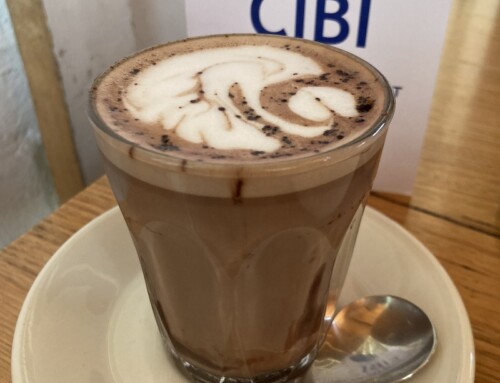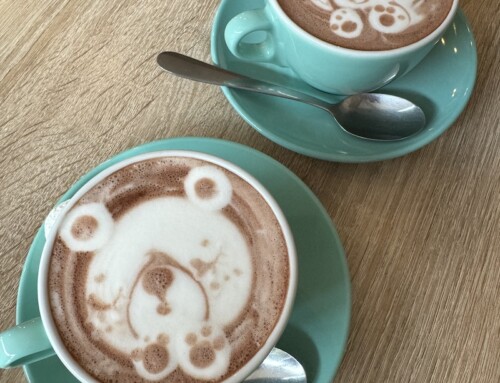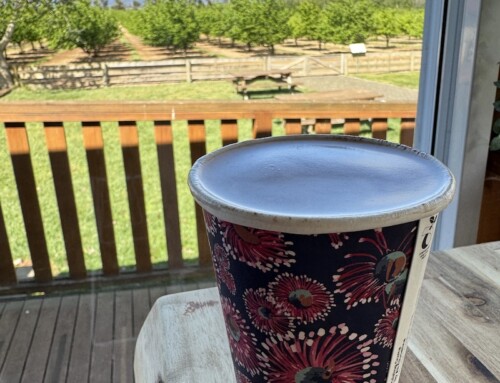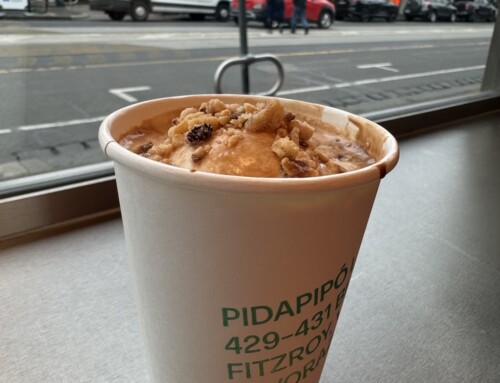I managed to turn a family holiday to far North Queensland into a cocoa research trip this past August. I will add that no one in my family complained…in fact everyone was pretty excited at the prospect of seeing and tasting chocolate in all its stages, from seed to bar. Few people, including here in Australia, realise that cocoa is grown here or even how chocolate is made. You can learn a bit more about that by reading this previous post.
Many of the cocoa growers in Australia are either centred around Tully/Mission Beach or in Mossman a little further north, including the Australian Chocolate Farm. In 2000, a research project run by the Department of Agriculture aimed to identify if and where cocoa might grow in Australia. It was found that the area between Tully in the South and Mossman near the Daintree National Park in the North (which is UNESCO World Heritage listed) were ideal. Note that this isn’t a big area at all; its only 217km from Tully to Mossman.

Everything about our little detour to the Australian Chocolate Farm was fantastic, starting with the drive in. This region is also the centre of Australian sugar production, and you can’t escape the fields of sugar cane, as well as the little trains taking freshly cut cane to the mill nearby. The Daintree Rainforest provides an ideal backdrop. This rainforest is the oldest tropical rainforest in the world, and also one of the most biologically diverse (amongst other things, it has more ancient families of flowering plants than anywhere else in the world, including the entire Amazon jungle). The road passes through a little stream that spills out over the road. You couldn’t make this more scenic if you tried.
We drove into a very large car park and walked up to the main building where Jenny Kirk, one half of Australian Chocolate Farm along with her partner Darryl Kirk, greets us with a huge and inviting smile. It’s obvious that, at some point (hopefully soon) we won’t be the only ones visiting this beautiful spot. “We are going to be opening soon with a cafe, shop and tours”. If any of you reading this have been thinking of touring the region, keep an eye out on their Facebook page for opening dates. it’s worth planning your trip around these.
We pass through the main building, which is being set up as a cafe with a view of their chocolate making equipment. Out back we slowly start walking through rows of cocoa trees, each one covered in beautiful pods ranging from bright green to yellow and orange “I keep seeing ripe ones. We swore we wouldn’t pick this week because we are going away to a wedding. It is all about timing. We could do another harvest but you have to be here for the fermentation and drying processes …ah there’s another one!”.
She generously shares her story. Thirty years ago, they moved up from Melbourne “we had that ‘this is nice’ moment so many people have when they visit this part of Queensland, so we decided to stay”. They bought 12 acres here around Mossman and thought they might like to do something with it. Then an opportunity presented itself to be part of a government sponsored trial to explore how cocoa might grow in Australia. “At the time sugar cane farmers in the region had just had 5 years of bad prices and the government was encouraging them to take a parcel of their land and turn it into cocoa”. The programme paid for half of all the set-up costs, including all the seedlings. “We thought well, let’s give it a go and this is what it evolved into!”


As cocoa was new in Australia, they were novices, and it was a lot of trial and error. The seedlings were brought from Papua New Guinea. They were very fragile, and most didn’t survive the first planting and were replaced with a second batch. The trees, especially the young ones, were getting sunburnt and it was recommended they spray the plants with a special sunscreen. “But they gave us the wrong ratio and a few days later, all the trees were dead, so we planted again. All of these things have a real journey story. We didn’t just suddenly have this magic farm. It’s a lot of work and takes time”. It took four years before they were ready to harvest. Today they have 1600 trees on 12 acres.
At first, they sold the pods to another company, but soon decided that they wanted to do something with them themselves. Both are chefs and have catering experience, so they felt they had enough knowledge to make this happen. Darryl trained as a chef, then a pastry chef and then as a chocolatier and spent time working with chocolate companies to learn everything he could about making quality chocolate from seed to bar.
We walked to an open shed at the back of their property where the processing is done. There they cut open the pod, pull out the seeds from the placenta. We suck on a few of the seeds. The pulp tastes like candy according to the kids. It is like lychee and a very ripe peach to me. You can also eat the bright purple seeds although they are very bitter and taste nothing like chocolate (there are a few more steps in the processing before it becomes chocolate as we know it). The cocoa seeds are placed in a box covered with banana leaves to ferment. Once fermented they are left to dry in the sun before being ready to be made into chocolate.


Jenny and Darryl use their beans in their chocolate and while you can’t yet buy this (soon!), they have been winning a lot of awards. Just a few weeks ago they won another Silver at the World Chocolate Awards for their milk chocolate. They are pairing Australian natives with their chocolate, including lemon myrtle which they grow in their garden. Lemon myrtle has leaves that can be used fresh or dried, in savoury or sweet cooking or even brewed into a tea and bring a beautiful zingy note to chocolate. The wattleseed milk chocolate tastes like Nutella should, and I begged them to turn it into a hot chocolate to sell at their café. I also tasted their 85% dark chocolate which I really enjoyed. Often when you go higher than 75% things start getting a bit too dark and mysterious and you lose people, but this one was wonderfully complex and interesting.
We need more farmers and makers like Jenny and Darryl in Australia in my opinion. I asked her what she thought the future will bring. “Many cane farmers are looking to diversify. There are farmers starting to grow, but most don’t know what to do with the pods”. It’s also a lot of work. The trees go dormant in January to March “but even that is a lot of work because you need to prune the trees then”. Pods ripen throughout the year, and right now they are getting big crops (about a ton a week off their trees.) “What amazes me about cocoa trees is that you can have a new flower, the babies growing, a midrange or a ripe pod all in the same tree.” This makes it time consuming and labour intensive. You also never know what will happen. For example, this year there have been several cold nights in the area which made some of the seeds sprout, “We don’t use those as this affects the flavour of the final chocolate”. Both work part time in other jobs as they set this up. If it isn’t challenging enough with the farm, or the chocolate making, they are also busy getting the building and business set up to open. “There are a lot of moving parts and things go wrong every day, but it’s our passion, we’re excited”.
Australian Chocolate Company will soon be opening to the public who can take tours of the farm and learn how chocolate is made, from seed to bar. Having spent time with Jenny, I’m so thrilled she will be doing this as she has so many interesting insights and stories to share. “It has been a challenge in Australia because we are starting from scratch. Audiences don’t know where cocoa comes from, but we are hoping to change that”. You can follow their journey and stay tuned for opening times here.







